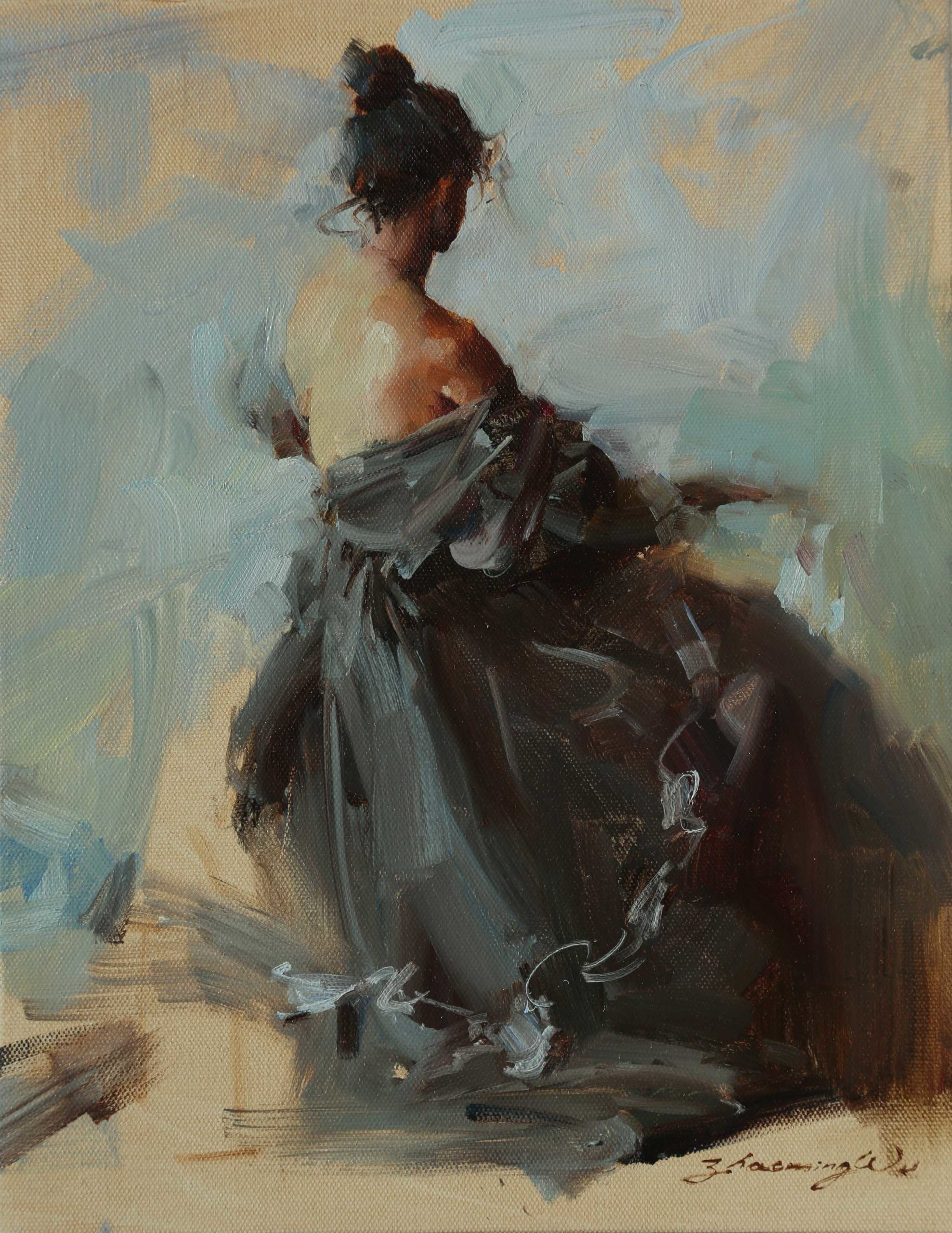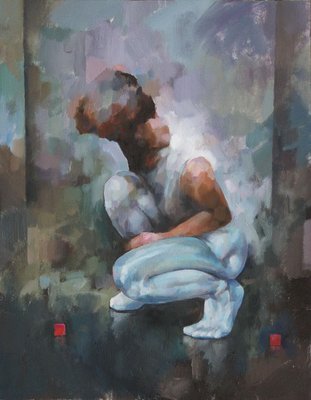The Development of Figurative Oil Paint: Comprehending Its Historical Importance and Modern Interpretations
The development of metaphorical oil painting offers as a compelling lens with which to examine the interaction between creative expression and historic context. Contemporary artists, attracting from this rich heritage, are now reinterpreting the human number in ways that challenge typical narratives.
Origins of Figurative Oil Painting
The origins of metaphorical oil paint can be traced back to the early Renaissance in Europe, specifically in the 15th century. This duration marked a substantial departure from the stiff kinds and flat representations particular of medieval art. Artists started to discover naturalism, emphasizing the human figure and its psychological expression. The development of oil paint permitted higher deepness of shade and detail, enhancing the realistic look and vibrancy of their job.

In this transformative age, figures were frequently portrayed within contextually rich environments, showcasing not just their physical features yet likewise their mental states. Pioneers such as Jan van Eyck and Titian utilized the tool's convenience, using layering strategies to achieve luminance and texture. This advancement helped with the portrayal of intricate textiles and the subtleties of complexion, adding to the growth of portrait and narrative scenes.
Moreover, the Renaissance emphasis on humanism cultivated an admiration for distinctiveness, which consequently affected artists to create even more vibrant and relatable figures - figurative oil painting. Consequently, figurative oil paint became an effective automobile for storytelling and emotional involvement, preparing for future artistic motions and designs
Secret Historic Motions
Substantial historical activities have formed the evolution of metaphorical oil paint, each contributing one-of-a-kind viewpoints and strategies that expanded the tool's opportunities. The Renaissance marked an essential moment, highlighting realistic look and the human form, with musicians like Leonardo da Vinci and Michelangelo pressing the boundaries of physiological precision and perspective. Following this, the Baroque age brought dramatic contrasts of light and darkness, exhibited by Caravaggio, who instilled spiritual themes with intense emotionality.
The 19th century presented Romanticism and Realistic look, where musicians such as Delacroix and Courbet challenged classic ideals, concentrating on private expression and day-to-day life. The introduction of Impressionism better revolutionized the medium by highlighting the results of light and shade, bring about a departure from traditional depiction.
In the very early 20th century, motions like Expressionism and Cubism redefined metaphorical paint through abstraction and the exploration of emotional depth. Each of these motions not just showed the social changes of their times however likewise laid the foundation for modern analyses. The interaction in between these historic activities has actually developed a rich tapestry of viewpoints and styles, influencing contemporary artists in their pursuit of capturing the human experience on canvas.
Techniques and Materials Advancement

Throughout the Baroque period, strategies such as webpage chiaroscuro and sfumato emerged, boosting the emotional vibration of figurative make-ups. Artists started to try out lusters and impasto, controling appearance and brightness. By the 19th century, innovations like making use of pre-mixed paints in tubes transformed access, enabling musicians to paint en plein air and catch the short lived effects of light.
The 20th century observed the introduction of artificial pigments and tools, which expanded the combination and modified the consistency of oil paints. The exploration of new application strategies, such as palette knives and brushes of differing rigidity, further diversified creative expression. Jointly, these advancements show the advancing relationship between materials, strategies, and the imaginative vision inherent in figurative oil paint.

Contemporary Interpretations
Contemporary interpretations of figurative oil painting reflect a dynamic dialogue between tradition and innovation, where artists challenge developed standards and discover varied motifs. This advancement materializes in different methods, as contemporary artists blend classical strategies with modern-day principles, usually resolving social, political, and individual stories.
Several experts attract motivation from historic works, yet they infuse their items with modern point of views, using the human form as a vehicle for discourse on culture, identification, and gender. Artists increasingly experiment with abstraction, distortion, and more helpful hints multimedias, which enables for a broader analysis of the number and its context.
Additionally, the use of vivid shade combinations and unconventional make-ups typically serves to interfere with conventional viewing experiences, prompting crucial engagement from target markets. This shift in emphasis extends past looks; it reflects an expanding understanding of the intricacies of human experience in an interconnected world.
As metaphorical oil painting proceeds to evolve, it continues to be an important tool for exploring the subtleties of modern life, symbolizing both a regard for heritage and a commitment to modern thought. The result is an abundant tapestry of expression that resonates with the complexities of the modern-day human condition.
Effect On Modern Art
The influence of figurative oil painting on contemporary art is extensive, as it has constantly influenced a myriad of imaginative activities and practices throughout the 20th and 21st centuries. From Expressionism to Surrealism and beyond, the exploration of the human number has actually continued to be a central theme, enabling musicians to communicate intricate feelings and stories. This emphasis on figurative representation has resulted in a re-examination of standard strategies, causing cutting-edge approaches that blend realism with abstraction.
Moreover, contemporary artists have embraced figurative oil painting as a way to deal with social and political go right here problems, using the medium to challenge perceptions of gender, identity, and society. The resurgence of rate of interest in metaphorical work in recent years reflects a hoping for link in a progressively digital world, where human experience and emotion are vital.
Furthermore, the dialogue in between figurative oil painting and modern-day art is apparent in the works of artists such as Kehinde Wiley and Jenny Saville, that attract on historic recommendations while instilling their pieces with modern relevance. Inevitably, metaphorical oil paint proceeds to form and redefine contemporary creative expression, underscoring its long-lasting value in the art world.
Conclusion
The evolution of metaphorical oil painting emphasizes its historic importance and flexibility throughout various imaginative motions. From the naturalism of the Renaissance to the emotive expressions of the Baroque and the cutting-edge methods of modernity, this tool has continually changed. Contemporary interpretations reflect lively colors and unusual structures, promoting critical involvement with social and political motifs. Ultimately, metaphorical oil painting stays a vital tool for discovering the human experience, resonating greatly in today's digital landscape.
The evolution of metaphorical oil painting serves as a compelling lens with which to check out the interplay between creative expression and historic context.Substantial historical movements have formed the advancement of metaphorical oil painting, each contributing special ideologies and techniques that expanded the medium's possibilities.As historical motions formed the trajectory of metaphorical oil paint, the strategies and products employed by artists have additionally undertaken significant transformations. figurative oil painting.The effect of figurative oil painting on modern-day art is extensive, as it has consistently influenced a myriad of creative motions and practices throughout the 20th and 21st centuries.The evolution of figurative oil painting underscores its historic value and flexibility throughout numerous imaginative motions